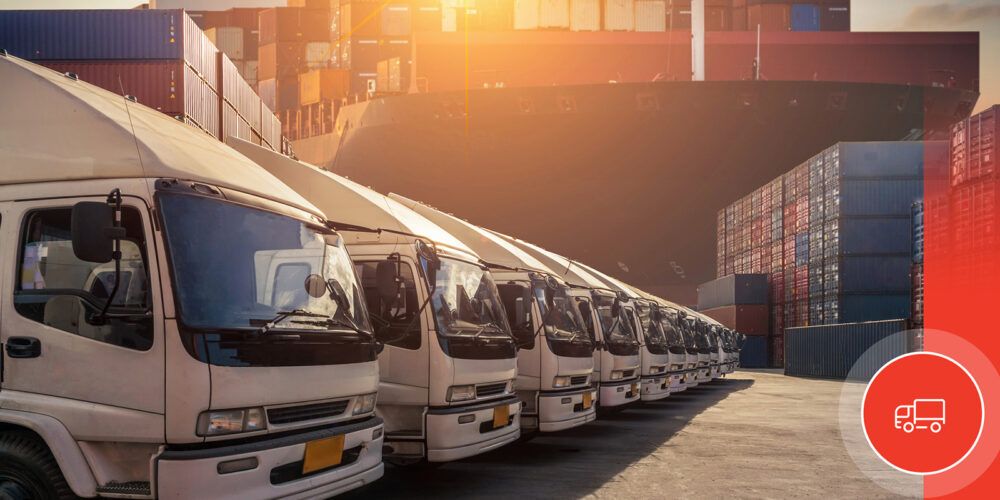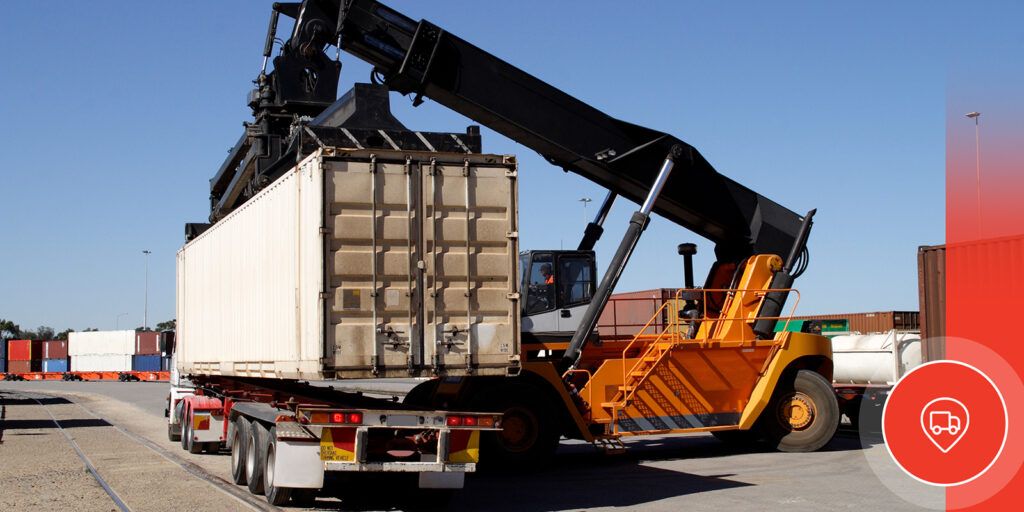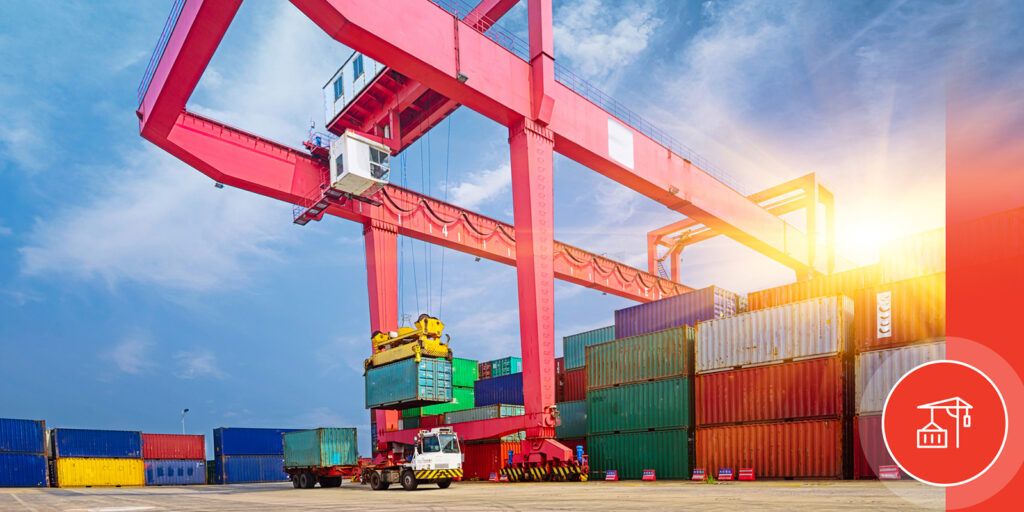 The results of the externalities assessment show that road transport has a much higher negative impact than rail and maritime transport. (PierNext / GettyImages)
The results of the externalities assessment show that road transport has a much higher negative impact than rail and maritime transport. (PierNext / GettyImages)
Calculating externalities in transport: how intermodality significantly reduces external costs
778 million euros. This is the estimated amount of savings in negative externalities that the use of rail transport and short sea shipping (SSS) in Port of Barcelona in 2020 has implied for society and environment. With these intermodal services, approximately 330,000 trucks have been withdrawn from the road, with the consequent reduction in environmental impact and other costs that this represents. A 97% reduction in external transport costs. We explain the methodology used with the advice of MCRIT, a specialized consultancy.

Noelia Martín is the Head of Hinterland, Business Strategy at the Port of Barcelona.

Efrain Larrea is aTransportation and Sustainability Consulting Engineer at MCRIT.
 The results of the externalities assessment show that road transport has a much higher negative impact than rail and maritime transport. (PierNext / GettyImages)
The results of the externalities assessment show that road transport has a much higher negative impact than rail and maritime transport. (PierNext / GettyImages)
What are externalities?
External costs or externalities are the social costs generated by transport operations due to their negative impact, both locally and globally, on the environment and the welfare of society. These are mainly CO₂ emissions, pollution and also accidents, lost time due to congestion, noise, and the wear and tear of infrastructures, mainly.
These costs are not perceived as such and are not being borne directly by the user, unlike the so-called internal costs like wear and tear on the vehicle itself, the cost of fuel, time and transport fees, among others. If the user does not take into account external costs when making a transport decision, he or she has no incentive to reduce them by using alternative and more sustainable modes of transport with the environment and society.
What does the European Commission say?
For a few years now, European transport policy has addressed the improvement of sustainability of the transport system. Recently, in 2020, the European Commission has published its Sustainable and Smart Mobility Strategy – putting European transport on track for the future (AS 2020 789 final) for the decarbonisation of the sector, in line with the European Green Deal and which aspires to climate neutrality by 2050 and a reduction in the 90% of the emissions derived from transport compared to 1990. For this reason, it promotes numerous initiatives, such as the internalization of the external costs of transport through the concept of "who pollutes pays" and the transfer of traffic to more sustainable modes of transport, favoring the rail and river and / or sea transport whenever possible. The Commission plans to boost freight transport by rail, which needs to double by 2050, promote intermodality and make short sea shipping more sustainable, smart and resilient.
In this context, quantifying the external costs linked to the different modes of transport is key to establishing any internalization measure and assessing the impact on improving the sustainability of modal shift from road to rail and short sea shipping . The Commission has developed a methodology for these calculations, as we will see below, and the Port of Barcelona has used it to quantify the savings in externalities resulting from the Port's intermodal offer.

How externalities are calculated
The procedure used is based on the official calculation methodology of the European Commission, the Handbook on the external costs of transport, which is periodically updated and improved. The latest version is from 2019.
In this methodology, a very detailed analysis of the marginal costs involved in each new transport unit introduced in the distribution networks is carried out, whether by road, rail or sea. The impact on various elements that form what we call transport externalities is assessed individually, with rigorous scientific studies, and a price is eventually assigned. This allows to establish the unit cost of transporting goods in terms of externalities for each mode, highlighting the important differences that exist between these modes.
The following items are included in the calculation:
- Congestion - adding new traffic increases travel times and this results in financial losses.
- Pollution - fossil fuel transportation generates gases that cause diseases and even death.
- Climate change - burning fossil fuels for transportation adds greenhouse gases to the atmosphere, accelerating climate change.
- Noise - especially in urban environments, noise associated with the movement of vehicles affects people's lives in a negative way.
- Accidents - the increase in traffic produces a greater number of accidents, with an economic damage, and very often victims.
- Infrastructures - traffic accelerates the wear and tear of infrastructures. This is partially recovered on toll roads with payment of fees, but not on the rest of the network, which is usually free.
- Avant-post processes - certain directly related pre and post transport processes have an environmental impact. These processes include the deployment of the necessary energy to the vehicles (fuels / electricity), which is known as “well-to-tank emissions”, and the manufacture, maintenance and disposal of the vehicles and infrastructure used in transport.
The results of this methodology for evaluating externalities shows that road transport has a much higher negative impact than rail and maritime transport, up to 10 times higher for each tonne and kilometer transported. The following table shows the average values of externalities for each of the modes:
Table 1 Economic valuation of externalities by concept and mode in c € / ton-km:
| Mode | Congestion | Accidents | Climate Change | Noise | Pollution | Avant-post
processes |
Infraestructures | Total |
| Road | 0.10 | 0.06 | 0.46 | 0.01 | 8.20 | 2.20 | 0.65 | 11.70 |
| Rail | 0.00 | 0.10 | 0.00 | 0.00 | 0.10 | 0.20 | 0.50 | 0.90 |
| SSS | 0.00 | 3.70 | 0.20 | 0.00 | 0.40 | 0.10 | 0.00 | 0.70 |
The Commission plans to promote rail freight transport, which has to double by 2050, and promote intermodality
Environmental calculations
The estimation of the impact of the use of rail and the SSS in terms of externalities depends on each individual route, since elements such as the distance traveled by each mode condition the results that will be obtained. It is done with the values of the previous table and the following calculation algorithm:
- We select the route that we want to evaluate identified by the point of origin and destination.
- We obtain the travel distances of the route by road and alternative modes (rail or SSS).
- We obtain the volumes of merchandise transported en route (containers, new vehicles, UTIs).
- We multiply the unit values of the road externalities by the volume of goods and the distance traveled (this is the scenario where we do not have alternative modes).
- We multiply the unit values of the externalities of the railway or SSS by the volume of goods and the distance traveled by railway or SSS.
- We compare the two values obtained and the savings that the rail and the SSS contribute in this route.
- We repeat the process for all the routes we are evaluating and add the externalities in the road-only scenario and the scenario with rail + SSS.
Of all the modes of freight transport, the road has the highest impact on externalities. This is mainly due to the type of energy it uses, based on fossil fuels in almost 100%.
On the other hand, the railroad uses predominantly electricity (on average, in 2019 in Europe 83% of the ton-km in rail was by electric train as opposed to 17% of diesel) and this significantly reduces gas emissions from greenhouse effect and pollutants. This does not mean that the railway is emission-free, since the electricity consumed in Europe comes in part from non-renewable sources (coal, oil and combined cycle). Still, the resulting impacts are well below those of the road.
In the case of SSS and in general, navigation for the transport of goods, fossil fuels are also the main source of energy as in the case of the road, but the energy efficiency of ships is much higher than that of trucks. When we count all the externalities, these become even lower than those of the rail, because during navigation there is no interference with land mobility. On the other hand, it must be taken into account that current dock electrification projects in many European ports will reduce the externalities linked to pollutants and noise emissions, making this mode even more attractive at an environmental level.

In Barcelona, the railway has grown significantly in the last decade, achieving high share: 14% in containers and 35% in cars
The Port of Barcelona's commitment to the railway
In recent years, the Port of Barcelona has managed to consolidate a wide range of regular and frequent rail services for containers with the center and northeast of the peninsula, which has helped to substantially increase the competitiveness of the foreign trade sector in these regions.
Companies in the large distribution, agri-food, fashion, household appliances and chemical products sectors, among others, use the rail to import or export their products through the Port because it is a reliable, competitive and sustainable alternative to road transport. In the automotive sector, the main production plants in Spain are connected by rail to the Port of Barcelona, which they use to carry out their exports.
The standard gauge connection with the rest of Europe also allows car trains to arrive from Germany. For all this, the railway has grown significantly in the last decade, achieving high shares, 14% in containers and 35% in cars, compared to other reference ports and especially when compared to the global railway share in Spain.
In relation to short sea shipping services, Barcelona is one of the leading ports in the Mediterranean, with regular and frequent connections with Italy and the Maghreb. The 134,123 intermodal transport units and the 86,925 new sale vehicles registered in 2020 with the Italian ports of Genoa, Civitavecchia, Savona and Livorno and the port of Tangier, translate into 144,000 trucks diverted from the road in favor of the sea, more efficient economically and environmentally.
From the data obtained from these traffics, we make a simulation taking into account the impact that the transport of UTIs, vehicles and passengers has on the road instead of using the SSS. We then apply the economic valuation from the European Commission study on externalities.
Savings in transport externalities due to the use of the railway mode and short sea shipping in the traffic that passes through the Port of Barcelona:
| 2011 | 2012 | 2013 | 2014 | 2015 | 2016 | 2017 | 2018 | 2019 | 2020 | Accumulated 10 years | ||
| M€ of externalities of freight transported by rail | 5 | 5 | 5 | 6 | 8 | 8 | 8 | 9 | 8 | 6 | 68 | |
| M€ of externalities of the freight transported by rail if it travelled by road | 111 | 118 | 121 | 146 | 194 | 199 | 221 | 244 | 224 | 166 | 1,743 | |
| M€ savings in externalities due to the use of the railway | 106 | 113 | 116 | 140 | 186 | 191 | 213 | 235 | 216 | 160 | 1,676 | |
| M€ € M of externalities of cargo transported in short sea shipping | 12 | 10 | 11 | 12 | 15 | 14 | 15 | 15 | 16 | 15 | 133 | |
| M€ of externalities of the cargo transported in short sea shipping if circulated by road | 541 | 436 | 477 | 532 | 635 | 596 | 642 | 668 | 686 | 633 | 5.846 | |
| M€ de ahorro en externalidades por el uso del short sea shipping | 529 | 426 | 466 | 520 | 620 | 583 | 627 | 652 | 670 | 619 | 5,713 | |
| M€ of externalities saved by use of the railroad and SSS | 635 | 539 | 583 | 660 | 806 | 774 | 840 | 887 | 885 | 778 | 7,389 | |
| % Savings in externalities | 97% | 97% | 97% | 97% | 97% | 97% | 97% | 97% | 97% | 97% | 97% |
The results show how the modal shift to more sustainable modes has a significant impact on the sustainability of transport chains, reducing 97% of the negative impact of the road alternative. In the last 10 years, the group of rail services and short sea shipping have represented a total of 7,389 million euros in the cost of negative externalities that the same volume of cargo transported by road would have entailed: 1,676 million euros of savings in externalities due to the use of FC and 5,713 million euros of savings in externalities due to the use of short sea shipping.
These results also confirm the positive multiplier effect of port investments in intermodal infrastructure. In the same period, more than 50 million euros have been invested in improving railway operations and infrastructure (new terminals and improvement of existing ones, with longer tracks and with metric, Iberian and standard gauges) and around 70 million euros for the last 4 years in short sea shipping terminals.
The IV Strategic Plan of the Port of Barcelona 2021-2025 continues to focus on increasing intermodality (rail and maritime) as one of the main strategic objectives in the field of environmental sustainability and the energy transition, together with the decarbonisation of port activity through the electrification of the docks, the promotion of the use of alternative clean fuels, the increase in energy efficiency and the management and production of renewable energies. The quantification of transport externalities is one of the key pieces of this determined commitment to sustainability.





